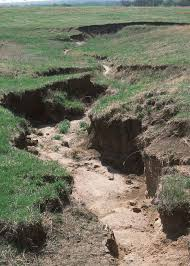Soil Erosion
soil erosion by Delta publications
Key Notes:
What is Soil Erosion?

Definition: Soil erosion is the process by which soil is worn away from the Earth’s surface by natural forces like water and wind.
Importance: Healthy soil is crucial for growing plants and maintaining healthy ecosystems.
Causes of Soil Erosion
- Water Erosion:

- Rainfall: Heavy rain can wash away the top layer of soil.
- Runoff: Water flowing over the ground can carry soil away.
2. Wind Erosion:

- Strong Winds: Wind can blow away loose, dry, or sandy soil.
- Lack of Vegetation: Without plants to hold soil in place, wind erosion is more severe.
3. Human Activities:
- Deforestation: Cutting down trees removes the roots that hold soil in place.
- Construction: Building projects can disturb soil and increase erosion.
- Agriculture: Plowing fields and overgrazing by animals can lead to soil loss.
Effects of Soil Erosion
- Loss of Fertile Topsoil: Reduces the ability to grow crops and plants.
- Sedimentation in Water Bodies: Soil washed into rivers and lakes can harm aquatic life.
- Land Degradation: Eroded land becomes less productive and can lead to desertification.
Preventing Soil Erosion
- Plant Vegetation:
- Trees and Grass: Roots of plants help to hold the soil together.
- Cover Crops: Plants like clover or rye can protect soil when not growing main crops.
- Erosion Control Techniques:
- Terracing: Creating stepped levels on hilly terrain to slow down water flow.
- Contour Plowing: Plowing along the contours of a hill to reduce runoff.
- Proper Land Management:
- Avoid Overgrazing: Manage the number of animals to prevent excessive soil disturbance.
- Use Mulch: Covering soil with organic material can protect it from rain and wind.
Summary
- Soil erosion is a natural process but can be worsened by human activities.
- It can have serious effects on agriculture and the environment.
- Preventative measures can help reduce soil erosion and maintain healthy soil.
Let’s practice!

